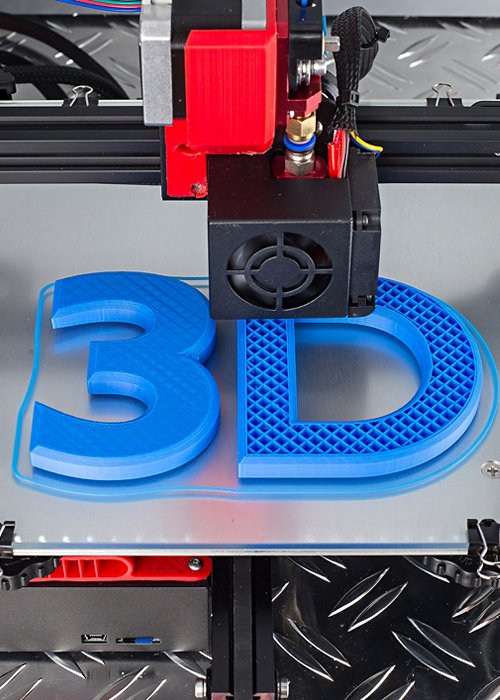If when you hear the word printer you imagine a box that spits out two dimensional sheets of papers, you definitely need an update. Today, in fact, 3D printers are under the spotlight. With 3D printers it is possible to make tools, jewellery, food, clothes, toys, cars and even ... houses! But what is 3D printing, how does it work, and what is innovative about it?
3D printing, or additive manufacturing, is a production technology that, to form objects, overlaps subsequent layers of material. In this sense it works in the opposite way to other techniques, such as milling, which proceeds by subtraction of material. In order to understand the object to be manufactured, the printers receive information through the computer and that is why we also speak of digital manufacturing.
3D printing has been used since the 1980's in the field of rapid prototyping, but thanks to developments in material sciences, which have made available a wide range of "three-dimensional inks" (such as new plastics, ceramics, metals, waxes, etc.), to reduced machine costs, to the possibility of printing large objects in very short times and, last but not least, thanks to the development of the information technology and the dissemination of the Internet, additive manufacturing has become increasingly widespread in the last few years.
Impact on production
3D printing is considered a particularly disruptive innovation because it introduces important novelties concerning both the characteristics of the objects as well as the production model. First of all, it makes it possible to produce objects with complex geometries in a single piece. Moreover, being based on the translation into objects of digital information that can be modified in its details and proceeding by adding layers, 3D printing allows the production of the objects to be customised. For example, if we think of a pair of shoes (yes, they can be printed in 3D!), depending on the end user, the size, as well as certain aesthetic features, they can be easily modified and the object adapted to the needs of each individual.
But the customisation of objects is not the only innovation introduced by 3D printing. Via the network, the information to be sent to printers to obtain objects can reach the entire world. In this way, where there is a 3D printer, potentially, there is the possibility to produce the same objects through the transfer of virtual information. This therefore means that production can be distributed and a different model to that on a large scale, where production is concentrated in certain places and products are distributed through the market, can be introduced. 3D printing, based on mass customisation, invalidates this model, but it should be remembered that at the moment it is not suitable for very large scale mass production.
Among the places that are increasingly inhabited by 3D printers are fablabs. These are spaces in which new craftsmen (makers) share machinery to produce objects through new technologies, including 3D printing, opening doors to anyone who wants to produce an object or build a prototype. These are veritable communities which, through co-design processes open to citizens, can find solutions to very concrete, but often unanswered, solutions, as in the case of the production of devices for specific categories of patients. People with rheumatic disorders, for example, of whom there are 5 million in Italy alone, have difficulty in handling objects. A handicap that significantly affects people's quality of life and autonomy, which can be addressed by designing grips specifically customised for the patient.
Printing biological tissue
In addition to objects and devices of various kinds, the new frontier of additive manufacturing also concerns living materials. We are in the field of so-called biofabrication, a technology that deals with complex living or non-living products, starting from biological material such as cells, molecules, extracellular matrices and biomaterials.
These products are very useful in various areas: they can be used to test drugs, investigate the toxicity of certain pollutants and study the evolution of certain diseases in vitro. But that's not all. Because thanks to the development of increasingly sophisticated additive manufacturing, some research groups are involved in the design of biomaterials that can be used as inks by printers to regenerate certain tissues, such as cartilages and bones.
This sector is taking giant steps and the idea of printing "spare parts" for our body is as fascinating as it is disturbing. This is why it is more than ever necessary for research and innovation to be accompanied by a reflection that involves society as a whole.




